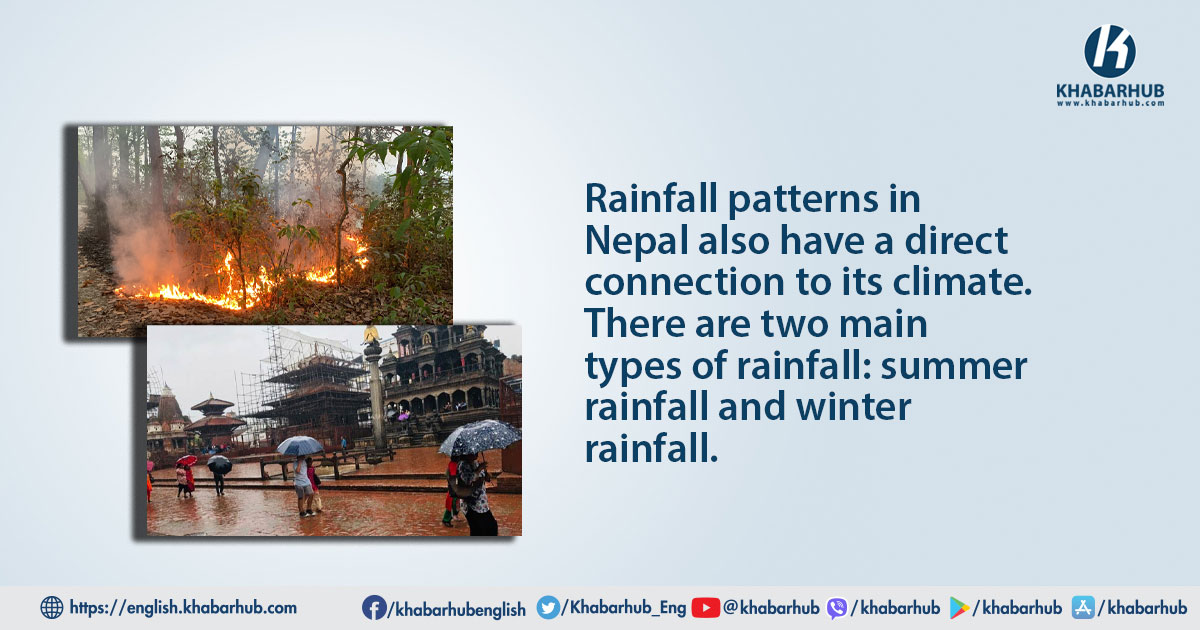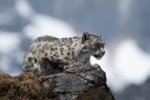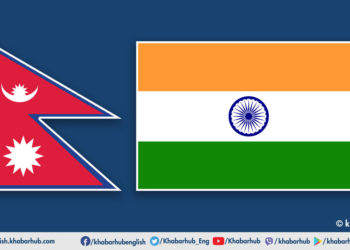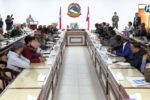KATHMANDU: Under normal weather conditions, Nepal should have experienced at least two rounds of winter rain since mid-October.
Regular snowfall in the Himalayan region and rainfall in the surrounding hills are crucial for winter farming. However, this year’s weather has not followed the usual pattern.
Government agencies report that only an average of 5.5 millimeters of rain has fallen so far, while at least 60 millimeters of rain should have accumulated by now.
The lack of rainfall has led to increased pollution levels, and seasonal patterns appear to be erratic. The most significant concern for Nepal is the heightened risk of forest fires.
Nepal’s forests, which should typically remain cool and humid due to the winter rains, are now catching fire.
The authorities have deployed helicopters to control fires that broke out in Kodari, Bhotekoshi Rural Municipality.
According to the Fire Information for Resource Management System (FIRMS) of the US National Aeronautics and Space Administration (NASA), over 100 areas in Nepal are currently affected by fires.
The pre-preparations include distributing necessary materials to the appropriate areas and using all available media to raise public awareness about fire prevention.
If the winter rains do not occur by February first week, government officials are unsure about the extent to which fires will spread in the dry forests, and how much damage they will cause to biodiversity and the environment.
In Nepal, there is a direct correlation between winter rains and forest fires. The country experiences two main climate phases: summer and winter.
The second phase of winter transitions into summer, which is further divided into two parts.
The hot and dry summer period starts in mid-February and lasts until June.
During this time, temperatures gradually rise, reaching their peak in June, which coincides with the highest frequency of fire incidents in Nepal.
Both forests and human settlements are highly vulnerable to fires during this period.
Although it feels hot and humid during the summer season (July to September), the air is still relatively moist.
Despite the intense heat, sweat cannot evaporate due to the humidity. However, continuous rainfall during the monsoon season prevents significant fire outbreaks.
Rainfall patterns in Nepal also have a direct connection to its climate. There are two main types of rainfall: summer rainfall and winter rainfall.
During winter, the sea is warm while the land is cold. Central Asia, too, is cold, and air pressure there is high.
As a result, cold, dry air flows from Central Asia towards the Indian and Pacific Oceans, where the air pressure is lower. This is known as the winter monsoon, which is cold and dry.
In Nepal, the winter monsoon enters from Tibet through Central Asia, bringing in very cold, dry air. This cold air flows as a headwind into the country.
In contrast, during the summer, monsoon air moves from the sea to the land. This air carries a significant amount of water vapor, causing abundant rainfall.
However, during the winter monsoon, the air contains little moisture, resulting in limited rainfall.
When the climate is favorable, rain can still occur in Nepal during winter, particularly when air from the westerly winds enters the country through the Mahakali River, typically starting in the last week of Poush and the first week of Magh.
Winter winds trigger concerns over drought and increased fire risk
This winter, the winds bring abundant snowfall to the highlands of the Sudurpaschim Province and rain to the plains.
In the west, these winds typically cause 20 to 30 millimeters of rainfall, while Kathmandu receives 10 to 15 millimeters, and eastern Nepal sees 5 to 10 millimeters.
When the country receives at least 60 millimeters of rainfall during the winter season, the climate can be considered typical.
However, this year, most parts of the country have not experienced the expected winter rainfall.
The mountains that should be covered in snow appear barren and dry, a direct consequence of changing climate patterns.
According to weather forecasts, rainfall is expected to remain below average in the coming weeks, raising concerns about drought and an increased risk of fires.
The Department of Hydrology and Meteorology reports that Nepal has received only 5.5 millimeters of average rainfall so far this winter.
Meteorologist Sudarshan Humagain noted that the possibility of the country receiving 60 millimeters of rainfall this season is low.
Looking ahead, Humagain shared that the forecast from India’s National Center for Medium Range Weather Forecasting (NCMRWF) suggests that while some partial rainfall may occur in the western provinces of Gandaki, Lumbini, Karnali, and Sudurpaschim, the likelihood of rainfall is minimal in the eastern provinces.
“According to the NCMRWF forecast, the four western provinces are expected to receive less than average rainfall starting next Tuesday, and no significant rainfall is expected in the eastern regions,” Humagain explained.
As a result, the country is expected to experience drier conditions in the coming days, increasing the risk of forest fires.
Government Preparedness and Actions
The Department of Hydrology and Meteorology had already issued warnings about below-average rainfall this winter.
In response, the government and relevant sectoral bodies are preparing for possible disasters based on the forecasted conditions.
Dijan Bhattarai, spokesperson for the National Disaster Risk Reduction and Management Authority, noted that while no new special programs for fire risk reduction have been introduced, preparations are following established practices.
Shiva Kumar Wagle, spokesperson for the Federal Ministry of Forests and Environment, said that regular discussions have been held under the ministry’s leadership to address the potential risk of fires.
“We have started pre-preparations. Last Friday, we met with all relevant stakeholders at the federal level to discuss how to proceed,” he said.
“We decided to implement a single-door system, and on Sunday, the issue was also discussed with provincial secretaries. An action plan is being developed.”
The pre-preparations include distributing necessary materials to the appropriate areas and using all available media to raise public awareness about fire prevention.
“The first step is to increase public awareness about forest fires, and we are preparing to move forward with that,” Wagle added.
“We also plan to carry out forest management activities to reduce the amount of flammable materials in forests, which should help decrease fire incidents.”
In the past year, there have been over 5,000 fire incidents across the country. The authorities report that 972 of these were forest fires, while the remaining 4,171 were other types of fires.
In the event of a fire, a rapid response team involving security agencies will be mobilized for disaster control, Wagle said.
Dijan Bhattarai, spokesperson for the National Disaster Risk Reduction and Management Authority, noted that while no new special programs for fire risk reduction have been introduced, preparations are following established practices.
Bhattarai also mentioned that there is a lack of advanced technology for fire control.
“Last year, there were major fires across the country, and a significant amount of forest fuel was burned. As a result, we estimate that there may be fewer fires this year. However, if wind conditions worsen, the number of incidents could rise,” Bhattarai stated.
“Our main task is fire control, which falls under the Ministry of Forests. The authority is preparing to mobilize security agencies and district disaster management offices, but we lack high-tech solutions for fire control.”
Fire Statistics and Impact
In the past year, there have been over 5,000 fire incidents across the country. The authorities report that 972 of these were forest fires, while the remaining 4,171 were other types of fires.
Tragically, 96 people have lost their lives due to fires, and significant material damage has also occurred.









Comment